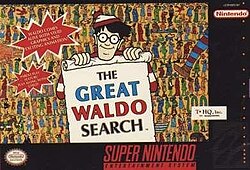
Super Mario Kart is a kart racing game developed and published by Nintendo for the Super Nintendo Entertainment System (SNES). The first game in the Mario Kart series, it was released in Japan and North America in 1992, and in Europe the following year in 1993. Selling 8.76 million copies worldwide, the game went on to become the fourth best-selling SNES game of all time. Super Mario Kart was re-released on the Wii's Virtual Console in 2009, on the Wii U's Virtual Console in 2013, and on the New Nintendo 3DS's Virtual Console in 2016. Nintendo re-released Super Mario Kart in 2017 as part of the company's Super NES Classic Edition.

Mario Power Tennis is a sports game developed by Camelot Software Planning and published by Nintendo. The game is the sequel to the Nintendo 64 title Mario Tennis, and is the fourth game in the Mario Tennis series. Power Tennis was released for the GameCube in Japan and North America in late 2004, and in PAL regions in early 2005. The game was ported for the Wii in 2009 as part of the New Play Control! series, and was also re-released as a Nintendo Selects title in 2012. A companion handheld game, Mario Tennis: Power Tour, was also released on Game Boy Advance around the same time as the original GameCube release, bearing the same title as Power Tennis in Europe.

Kirby Super Star, released as Kirby's Fun Pak in PAL regions, is an anthology action-platform game developed by HAL Laboratory and published by Nintendo for the Super Nintendo Entertainment System in 1996. It is part of the Kirby series of video games by HAL Laboratory. The game was advertised as a compilation featuring eight games: seven short subsections with the same basic gameplay, and two minigames.

An analog stick, also known as control stick, joystick or thumbstick, is an input device for a controller that is used for two-dimensional input. An analog stick is a variation of a joystick, consisting of a protrusion from the controller; input is based on the position of this protrusion in relation to the default "center" position. While digital sticks rely on single electrical connections for movement, analog sticks use continuous electrical activity running through potentiometers to measure the exact position of the stick within its full range of motion. The analog stick has greatly overtaken the D-pad in both prominence and usage in console video games.

Where's Waldo? is a hidden object game developed by Bethesda Softworks and published by THQ for the Nintendo Entertainment System in 1991. It was the first video game loosely based on Martin Handford's 1987 book of the same name. Mostly similar to the books, players must help Waldo get to the Moon by finding him in each of the eight levels in the game.

Wii Sports is a 2006 sports simulation video game developed and published by Nintendo for the Wii video game console. The game was released in North America along with the Wii on November 19, 2006, and in Japan, Australia, and Europe the following month. It was included as a pack-in game with the console in all territories except Japan, making it the first sports game included with the launch of a Nintendo system since Mario's Tennis for the Virtual Boy in 1995. The game was later released on its own as part of the Nintendo Selects collection of games.
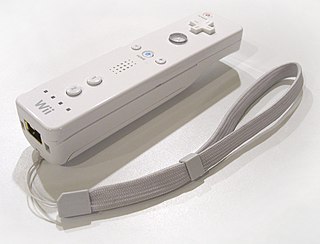
The Wii Remote, informally referred to with the portmanteau Wiimote, is the primary game controller for Nintendo's Wii home video game console. An essential capability of the Wii Remote is its motion sensing capability, which allows the user to interact with and manipulate items on screen via motion sensing, gesture recognition, and pointing using an accelerometer and optical sensor technology. It is expandable by adding attachments. The attachment bundled with the Wii console is the Nunchuk, which complements the Wii Remote by providing functions similar to those in gamepad controllers. Some other attachments include the Classic Controller, Wii Zapper, and the Wii Wheel, which was originally released with the racing game, Mario Kart Wii.

Wii Play is a party video game developed and published by Nintendo for the Wii console. It was released as a launch game for the console in Japan, Europe, and Australia in December 2006, and was released in North America in February 2007. The game features nine minigames, including a Duck Hunt-esque shooting range, a fishing game, and a billiards game, each of which are designed to showcase the features of the Wii Remote controller.
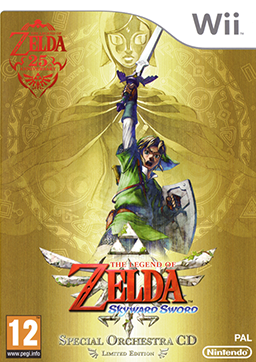
The Legend of Zelda: Skyward Sword is a 2011 action-adventure game developed and published by Nintendo for the Wii. A high-definition remaster of the game, The Legend of Zelda: Skyward Sword HD, was co-developed by Tantalus Media and released for the Nintendo Switch in July 2021.
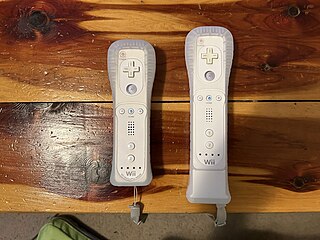
In computing, a motion controller is a type of input device that uses accelerometers, gyroscopes, cameras, or other sensors to track motion.
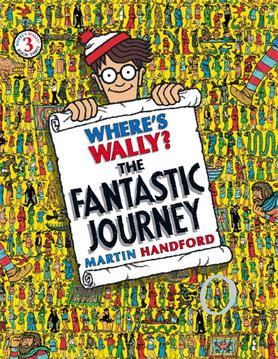
Where's Wally? The Fantastic Journey was the third Where's Wally?, first released in 1989. In the book Wally travels to fantasy lands in search of Wizard Whitebeard's magical scrolls. The book introduces the second recurring Where's Wally character, Wizard Whitebeard. Readers are also asked for the first time to find the Wizard's scrolls.
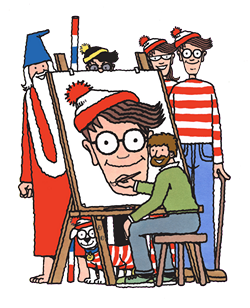
Where's Wally? is a British series of children's puzzle books created by English illustrator Martin Handford. The books consist of a series of detailed double-page spread illustrations depicting dozens or more people doing a variety of amusing things at a given location. Readers are challenged to find a character named Wally and his friends hidden throughout the pages.

Orbient, known in Japan as Orbital, is a puzzle video game developed by Skip Ltd. and published by Nintendo for the Wii's WiiWare digital distribution service. It is one of twelve games in the Art Style series of video games available for WiiWare and DSiWare. It is a remake of a Japan-only Game Boy Advance video game titled Orbital, released for the bit Generations series of video games.

Mario is a Japanese multimedia franchise created by Japanese game designer Shigeru Miyamoto for video game company Nintendo, which produces and publishes its installments. Starring the titular Italian plumber Mario, it is primarily a video game franchise but has extended to other forms of media, including television series, comic books, a 1993 feature film, a 2023 animated film, and theme park attractions. The series' first installment was 1983's Mario Bros. even though Mario made his first appearance in 1981's arcade game Donkey Kong and had already been featured in several games of the Donkey Kong and Game & Watch series. The Mario games have been developed by a wide variety of developers. Mario games have been released almost exclusively for Nintendo's various video game consoles and handhelds, from the third generation onward.
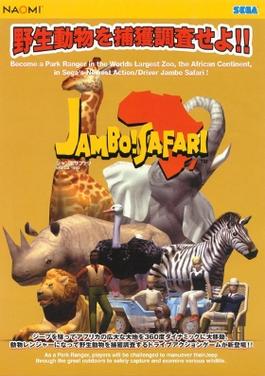
Jambo! Safari is a video game first released by Sega in 1999. The original arcade version of the game used the Naomi board, arcade hardware which was based on Sega's Dreamcast video game console. Even though other Naomi-based arcade games were, Jambo! Safari was never released for the Dreamcast. The UK version of the Official Dreamcast Magazine reported that the game was to be released in a 3-in-1 compilation along with other games in Sega's "Real Life Career Series", Brave Firefighters and Emergency Call Ambulance, but such a game was never released and neither of the other two games were ported either. Sega released versions of the game for the Wii and Nintendo DS, under the title Jambo! Safari: Animal Rescue on November 17, 2009.

Where's Waldo? The Fantastic Journey, known as Where's Wally? The Fantastic Journey in the United Kingdom, is a video game published by Ubisoft and developed by Ludia based on the book of the same name. It is a puzzle adventure game released for the Nintendo DS, Wii, Microsoft Windows, and the iPhone, and is also a remake of The Great Waldo Search, released in 1992.
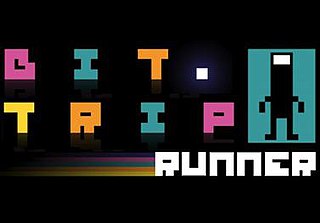
Bit.Trip Runner is an arcade-style rhythm game developed by Gaijin Games and published by Aksys Games for the Wii's WiiWare download service. It is the fourth game to be released in the Bit.Trip series of games, serving as the successor to Bit.Trip Beat, Bit.Trip Core and Bit.Trip Void, and as the predecessor to Bit.Trip Fate and Bit.Trip Flux. A remake called Bit.Trip ReRunner was released on September 19, 2023 for Windows, developed by Choice Provisions and Gamecraft Studios.

Super Mario All-Stars is a 1993 compilation of platform games for the Super Nintendo Entertainment System (SNES). It contains remakes of Nintendo's four Super Mario games released for the Nintendo Entertainment System (NES) and the Famicom Disk System: Super Mario Bros. (1985), Super Mario Bros.: The Lost Levels (1986), Super Mario Bros. 2 (1988), and Super Mario Bros. 3 (1988). As in the original games, players control the Italian plumber Mario and his brother Luigi through themed worlds, collecting power-ups, avoiding obstacles, and finding secrets. The remakes feature updated graphics—including the addition of parallax scrolling—and music, modified game physics, a save feature, and bug fixes.

Project Zero 2: Wii Edition, known in Japan as Zero ~Shinku no Chou~, is a 2012 survival horror video game developed by Tecmo Koei Games and published by Nintendo for the Wii. The game is a remake of Fatal Frame II: Crimson Butterfly (2003), following sisters Mio and Mayu Amakura as they are trapped in a ghost-filled village cursed by a failed ritual. Gameplay follows Mio as she explores the village searching for Mayu, fighting hostile ghosts using the series' recurring Camera Obscura. The game includes new endings, and an arcade minigame.

Wii Sports Club is a sports simulation video game, developed by Nintendo and Bandai Namco Studios and published by Nintendo for the Wii U throughout 2013 and 2014. It is the third entry in the Wii Sports series, a part of the larger Wii series. As an enhanced remake of the 2006 Wii launch title Wii Sports, it includes five minigames that replicate Tennis, Baseball, Bowling, Golf, and Boxing, and are controlled with motion controls that replicate the sports. New to the game is additional control schemes using the Wii U GamePad, online multiplayer, and Wii Motion Plus support. Players are organized into clubs that represent different regions, and scores and stats are tracked on Nintendo's social network Miiverse. Players could also communicate with each other during and after online matches using Miiverse. Each sport can be purchased individually or rented for a certain amount of time via a pass.
